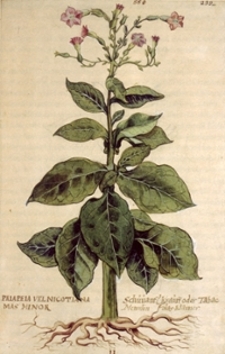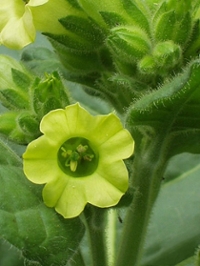
MinerAlert

MinerAlert
Nicotiana tabacum
Solanaceae (Nightshade family)
Indian tobacco.
Tabaco.

Leaves

Photo: William Rafti / Rafti Institute/Wikipedia
Nicotiana rustica
Safety/Precautions:
Before you decide to take any medicinal herb or herbal supplement, be sure to consult with your health care professional first. Avoid self-diagnosis and self-medication: Always be on the safe side!
Byron MJ, Baig SA, Moracco KE, Brewer NT. Adolescents' and adults' perceptions of 'natural', 'organic' and 'additive-free' cigarettes, and the required disclaimers. Tob Control. 2015 Dec 1. pii: tobaccocontrol-2015-052560. doi: 10.1136/tobaccocontrol-2015-052560. [Epub ahead of print]
Centers for Disease Control and Prevention. Tobacco Use. http://www.cdc.gov/WinnableBattles/Tobacco/index.html. Retrieved December 16, 2015.
Doll R, Peto R, Boreham J, Sutherland I. Mortality in relation to smoking: 50 years’ observations on male British doctors. BMJ 2004; 328: 1519–28.
Foster S., Johnson R. Desk Reference to Nature’s Medicine.
Washington, D.C.: National Geographic; 2004; pp. 358-359.
Nutt D, King LA, Saulsbury W, Blakemore C. Development of a rational scale to assess the harm of drugs of potential misuse. Lancet. 2007; 369(9566):1047-53.
Ott J. Pharmacotheon 2nd ed.
Kennewick, WA: Natural Products Press; 1996; pp. 373-376.
Stenersen J. Chemical Pesticides: Mode of Action and Toxicology.
Boca Raton, FL: CRC Press; 2004; pp. 4, 16.
Swerdlow J. Nature’s Medicine, Plants that Heal.
Washington, D.C.: National Geographic; 2000; pp. 118-122, 371.